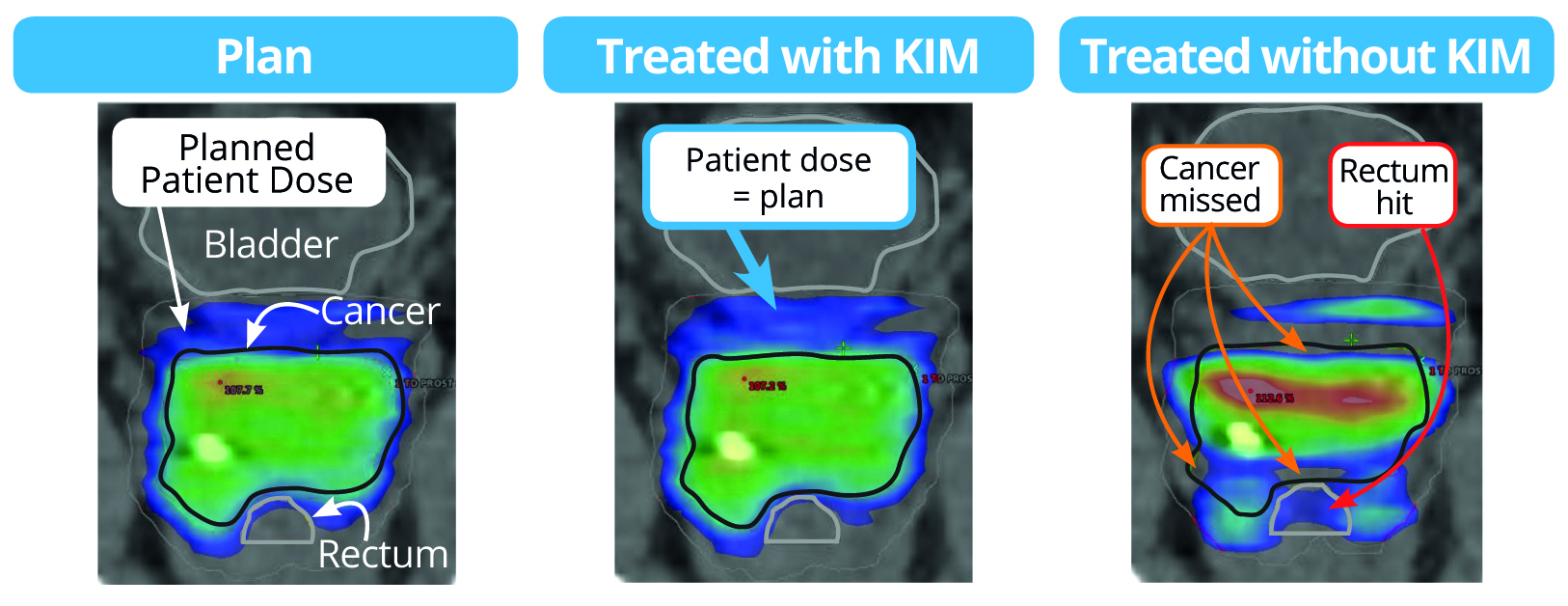Real-time cancer targeting on a standard linear accelerator.
The Problem
- The human body is a dynamic system
- Tumours moves during radiotherapy treatment.
- Standard treatment does not consider motion during irradiation
Our solution
- Real-time tumour motion monitoring on a standard linear accelerator
- Purely software solution
- 6 degrees of freedom monitoring: sub-mm and sub-degree accuracy
How KIM works


Intellectual Property
Three granted US patents
- US 8379794: Method to estimate position, motion of a target with a single X-ray imager
- US 9084888: Segmentation method
- US 9314219: Estimation of real-time rotation and translation of a target with a single X-ray imager
Research Opportunities
For more information and enquiries contact Professor Paul Keall.

